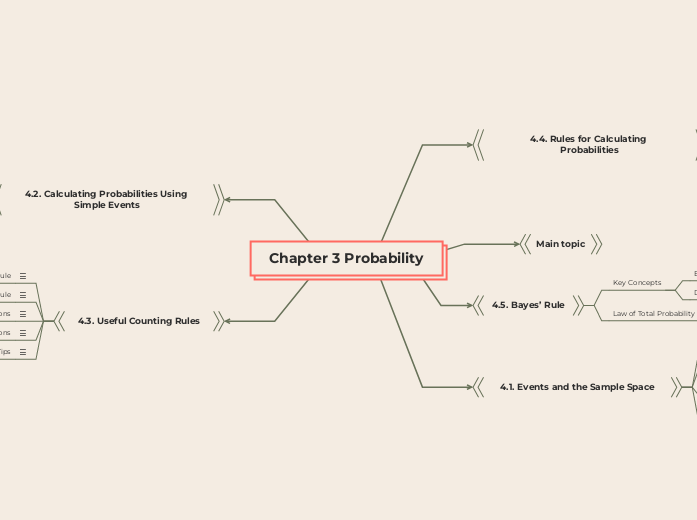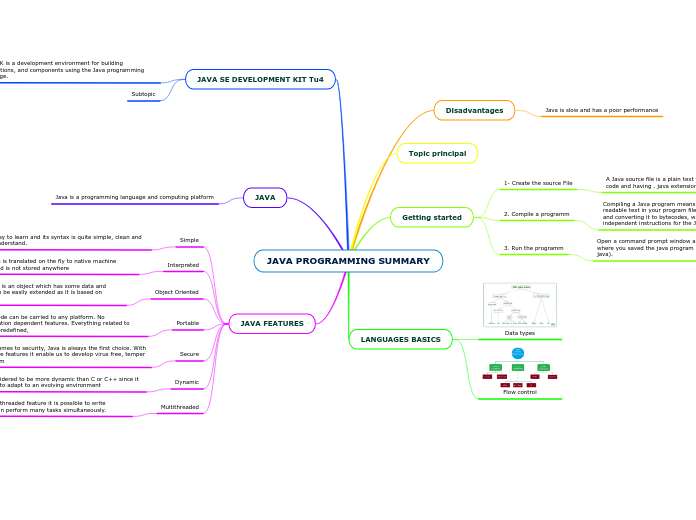Chapter 3 Probability
4.3. Useful Counting Rules
Practical Tips
- Using Calculators: Instructions for TI-83/84 Plus to compute permutations, combinations, and factorials.
- Importance of Valid Counts: Ensure all simple events are included and correctly assigned probabilities.
Combinations
Definition: Selections of objects without regard to order. Formula: 𝐶𝑟𝑛=𝑛!𝑟!(𝑛−𝑟)!
Relation to Permutations: 𝐶𝑟𝑛=𝑃𝑟𝑛/𝑟!
Permutations
Definition: Orderings of objects. Formula: 𝑃𝑟𝑛=𝑛!(𝑛−𝑟)!
The Extended mn Rule
Definition: For k-stage experiments with 𝑛1,𝑛2,...,𝑛𝑘 outcomes, total outcomes = 𝑛1×𝑛2×...×𝑛𝑘
The mn Rule
Definition: For two-stage experiments, with m outcomes in the first stage and n in the second, total outcomes = mn.
4.2. Calculating Probabilities Using Simple Events
Using Counting Rules
When dealing with large sample spaces, use counting rules to identify and list all simple events accurately.
Important Tips
- Include all simple events in the sample space.
- Assign realistic probabilities to simple events.
- Avoid omissions and ensure accuracy in probabilities.
Steps to Calculate Probability of an Event
- List all simple events in the sample space.
- Assign probabilities to each simple event.
- Identify simple events resulting in the event of interest.
- Sum the probabilities of these simple events.
Calculating Probability of an Event
Requirements for Simple-Event Probabilities
Each probability must lie between 0 and 1.
Sum of probabilities for all simple events in sample space 𝑆 must equal 1.
Characteristics of Probability
Definition of Probability
4.1. Events and the Sample Space
Visuals
Tree Diagram
Venn Diagram
Event
Definition: Collection of simple events.
Sample Space (S)
Definition: The set of all simple events.
Mutually Exclusive Events
Definition: Two events are mutually exclusive if, when one event occurs, the other cannot, and vice versa.
Simple Event
Definition: Outcome observed on a single repetition of an experiment.
Experiment
Definition: Process by which an observation or measurement is obtained.
4.5. Bayes’ Rule
Law of Total Probability
Key Concepts
Decomposition of Event A
A=(A∩B)∪(A∩Bc)
𝑃(𝐴)=𝑃(𝐴∩𝐵)+𝑃(𝐴∩𝐵𝑐)
Event Definitions
- B: The person selected is a man
- Bᶜ: The person selected is a woman
- A: The person is colorblind
- Sample Space (S): Consists of both men and women
- Mutual Exclusivity: Events that cannot occur simultaneously
Main topic
4.4. Rules for Calculating Probabilities
Extensions to Multiple Events
Intersection of Three Events (A ∩ B ∩ C):
Definition: Collection of simple events common to A, B, and C.
Union of Three Events (A ∪ B ∪ C):
Definition: Set of simple events in A, B, or C or any combination of them.
Important Relationships
Complement (Aᶜ): "Not A"
Intersection (A ∩ B): "Both...and" or just "and"
Union (A ∪ B): "Either...or...or both"
Key Definitions
Complement of an Event (Aᶜ)
Definition: Event that A does not occur.
Venn Diagram: Shaded area includes everything outside of A.
Intersection of Events (A ∩ B)
- Definition: Event that both A and B occur.
- Venn Diagram: Shaded area includes only the overlap of A and B.
Union of Events (A ∪ B)
Definition: Event that either A, B, or both occur.
Venn Diagram: Shaded area includes all of A and B.









